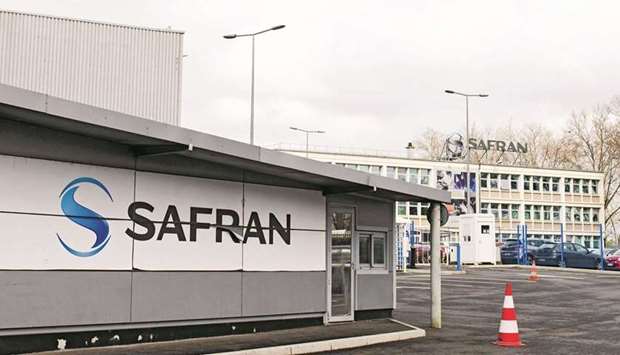General Electric Co and Safran SA are teaming up to develop technologies for a new generation of jet engines, seeking a breakthrough that would cut fuel consumption by more than 20% and potentially power single-aisle planes by the middle of next decade.
The demonstration programme will focus on a so-called open fan architecture, in which the engine’s blades operate without a traditional casing, the longtime joint-venture partners in CFM International Inc said yesterday. The project will also pursue hybrid-electric technology and be fully compatible with alternative energy sources such as sustainable aviation fuels and hydrogen.
The effort offers the clearest signal yet of how global aerospace giants will adapt to a world in which shrinking carbon footprints becomes a key goal. Plane makers Boeing Co and Airbus SE are under mounting pressure as governments crack down on carbon emissions that contribute to climate change. Much of that task will fall on engine manufacturers such as GE, Rolls-Royce Holdings Plc and Raytheon Technologies Corp’s Pratt & Whitney unit.
“We are reinventing the future of flight, bringing an advanced suite of revolutionary technologies to market,” GE Aviation boss John Slattery said in the statement.
GE fell less than 1% to $13.66 at 9:39am in New York. Safran was little changed at €123.58 in Paris.
The partners also extended their joint venture to 2050. The companies will double the number of engineers working on the new programme.
“We have to act now to accelerate our efforts to reduce our impact on the environment,” Safran chief executive officer Olivier Andries said in a statement.
Safran has previously said it would be difficult to go beyond the 15% fuel efficiencies achieved with the latest-generation Leap engine, which powers the Airbus A320neo and Boeing 737 MAX jets. The Leap uses conventional turbofan technology, and while more fuel savings could come from using larger-dimension fans, these would be heavier and harder to mount under aircraft wings.
It’s unclear how the new project with Boston-based GE differs from ongoing work by Paris-based Safran on “open rotor” engines, an approach that breaks with the turbofan design because the propeller blades operate without a surrounding casing, or nacelle.
In May 2017, Safran carried out ground tests in southern France of an open rotor design. The engine has two counter-rotating fans and no thrust reversers. While fuel consumption and carbon emissions are lower, the engine is noisier due to the propellers not being shielded.
The demonstrator was built through a European research program called Clean Sky that began in 2008. Two years ago, the French manufacturer’s head of technology, Stephane Cueille, wrote that after 70 hours of testing, there was still “a long way to go” on the technology that might not even have a future.
CFM’s drive comes as Boeing and Airbus chart divergent paths to curb emissions. Airbus hopes put a hydrogen-powered aircraft into service by 2035, though it has hinted it will continue to upgrade its top-selling A320 series of narrow-body jets. Boeing CEO Dave Calhoun recently ruled out making a hydrogen-fuelled jetliner before 2050, emphasising more conventional propulsion systems that incorporate sustainable fuels.
Boeing and Airbus have often timed all-new aircraft to engine technology that provides a step-change in efficiency, such as the GEnx turbofans that made Boeing’s 787 Dreamliner twin-aisle greener and quieter than its predecessors.
The timing of CFM’s latest push could complicate Boeing’s decision about when to introduce a new narrow-body jetliner to replace the 737, whose fuselage dates to a design from the 1960s. The Chicago-based plane maker has been weighing a midrange jet to counter the A321neo, where Airbus is dominating sales.

A logo at an entrance to the Safran aircraft engine component plant in Gennevilliers, France. The new project by Safran and GE will pursue hybrid-electric technology and be fully compatible with alternative energy sources such as sustainable aviation fuels and hydrogen.
